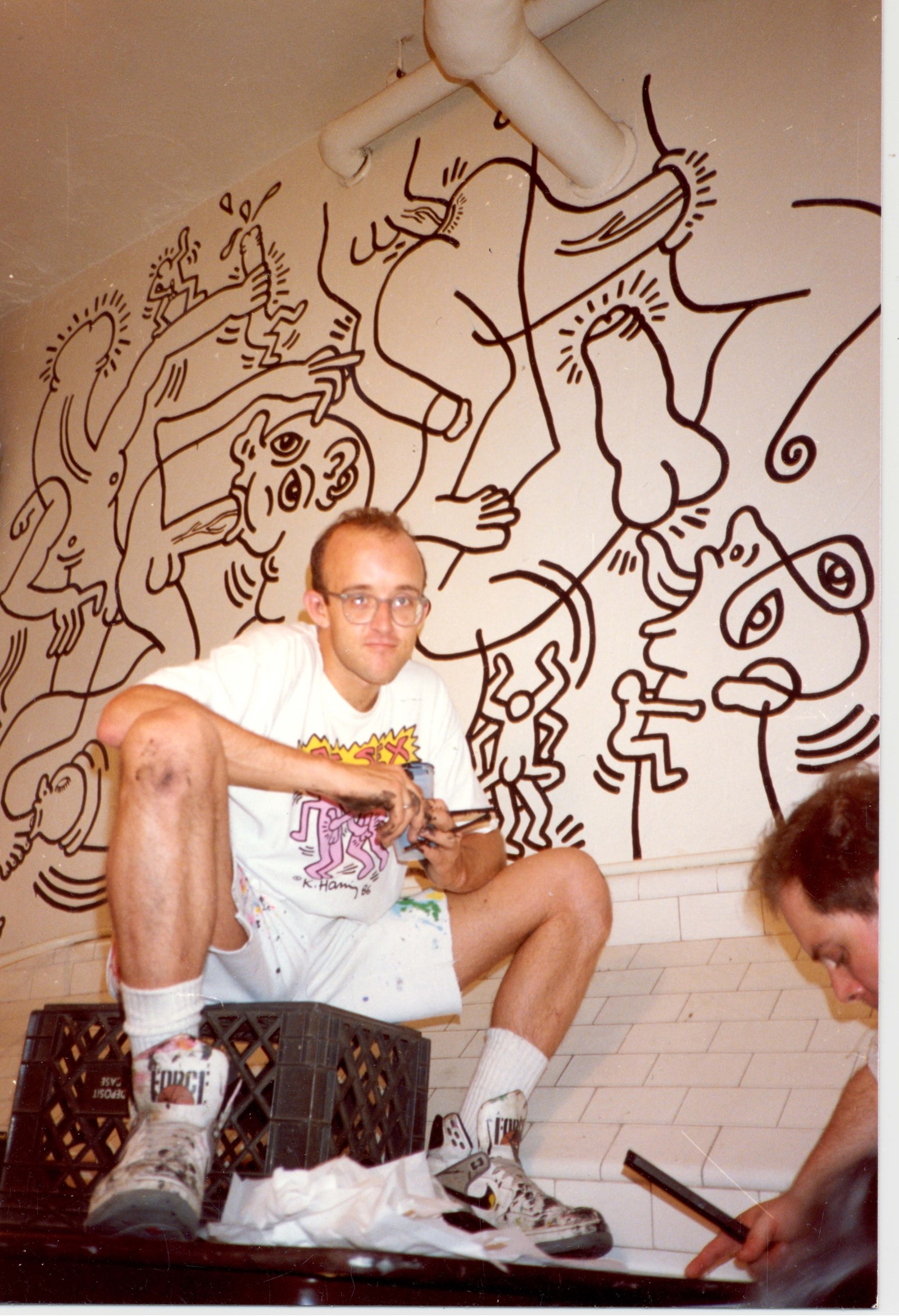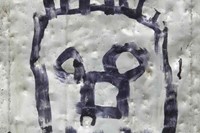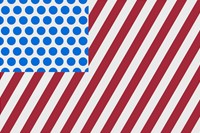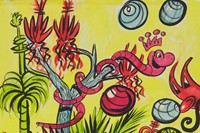Just 31 years old at the time of his death, Keith Haring (1958–1990) was a small-town boy who took the big city by storm when he moved to New York in 1978 to study at the School of Visual Arts (SVA). He began frequenting Club 57, an experimental art space and nightclub in the East Village, and quickly became close friends with a new generation of groundbreaking young artists including Jean-Michel Basquiat, Kenny Scharf, and Futura 2000.
In the early 80s, Haring made his name with some 40 “subway drawings”, introducing his soon-to-be iconic symbolic language to the world in a series of white chalk drawings on black matte paper that occupied unused advertising panels in New York City train stations. The public immediately fell in love with this early iteration of street art, which was often thematic in nature, offering holiday cheer as a treat. In 1982, Haring made his Soho gallery debut at Tony Shafrazi Gallery, and soon became the toast of the international art world – but at his heart Haring was a man of the people.
In 1986, Haring opened the Pop Shop, the ultimate retail space that offered affordable art in the form of T-shirts, toys, posters, and buttons. He was also devoted to art in the service of activism, collaborating with organisations and charities around the globe to raise money and awareness on issues as diverse as Aids, apartheid, and the crack epidemic. In 1988, Haring was diagnosed with Aids and less than two years later he was gone – yet the love of his work lives on, generation after generation.
On September 24, Sotheby’s will open Dear Keith: Works From the Personal Collection of Keith Haring, a dedicated online auction presenting over 140 works of art and objects gifted to, purchased by, and traded with Haring among his circle, by artists including Andy Warhol, George Condo, Rammellzee, Roy Lichtenstein, Scharf, and Basquiat. Full proceeds from the auction will benefit The Lesbian, Gay, Bisexual & Transgender Community Center of New York, an organization Haring proudly partnered with during his life. In advance of the auction, we speak with fellow artists and friends who share their encounters with Haring over the years.
Min Sanchez
Min Sanchez is the founder of Min Treats Cookies, esthetician at Skin by Min, and a founding member of the all-girl percussion based No Wave band Pulsallama.
“I was part of the Club 57 crowd and became friends with Kenny Scharf in 1978. All of us moved here that summer it seemed. I met Kenny and the next day I met Keith – it was such a little village then. All the faces were so familiar all the time in that part of town. We’d laugh and say we’d never go above 14th Street and many of us rarely did. Our lives were downtown.
“Keith was very soft spoken, focused, and always doing something. He wasn’t communal with his work; he was always by himself, working alone. I remember when he was doing the subway drawings and seeing people react to it. People didn’t know who he was but they knew those drawings. He’d do them for Valentine’s Day and he was giving the city his art. He was speaking to the people in his language that everybody could read and it was for them.
“Keith was such a sweet man. I used to bartend at night and I don’t know how many times Keith walked me home. He had a loyalty to family. He was very close with his own and they would be there when he had shows. We’d have Thanksgiving with them. He came from a humble background and was very innocent in a lot of ways. He was exploring the big city and came to terms with his sexuality, which was a big excitement for him. His parents accepted it very well in time.
“In 82, 83, things changed. The galleries came by, he hooked up with Tony Shafrazi, and all of a sudden they were having big art shows in Soho. The Club 57 days were over even though we were still friends. He loved to party, sex, the boys, and he could be very silly. I will never forget his laugh.”
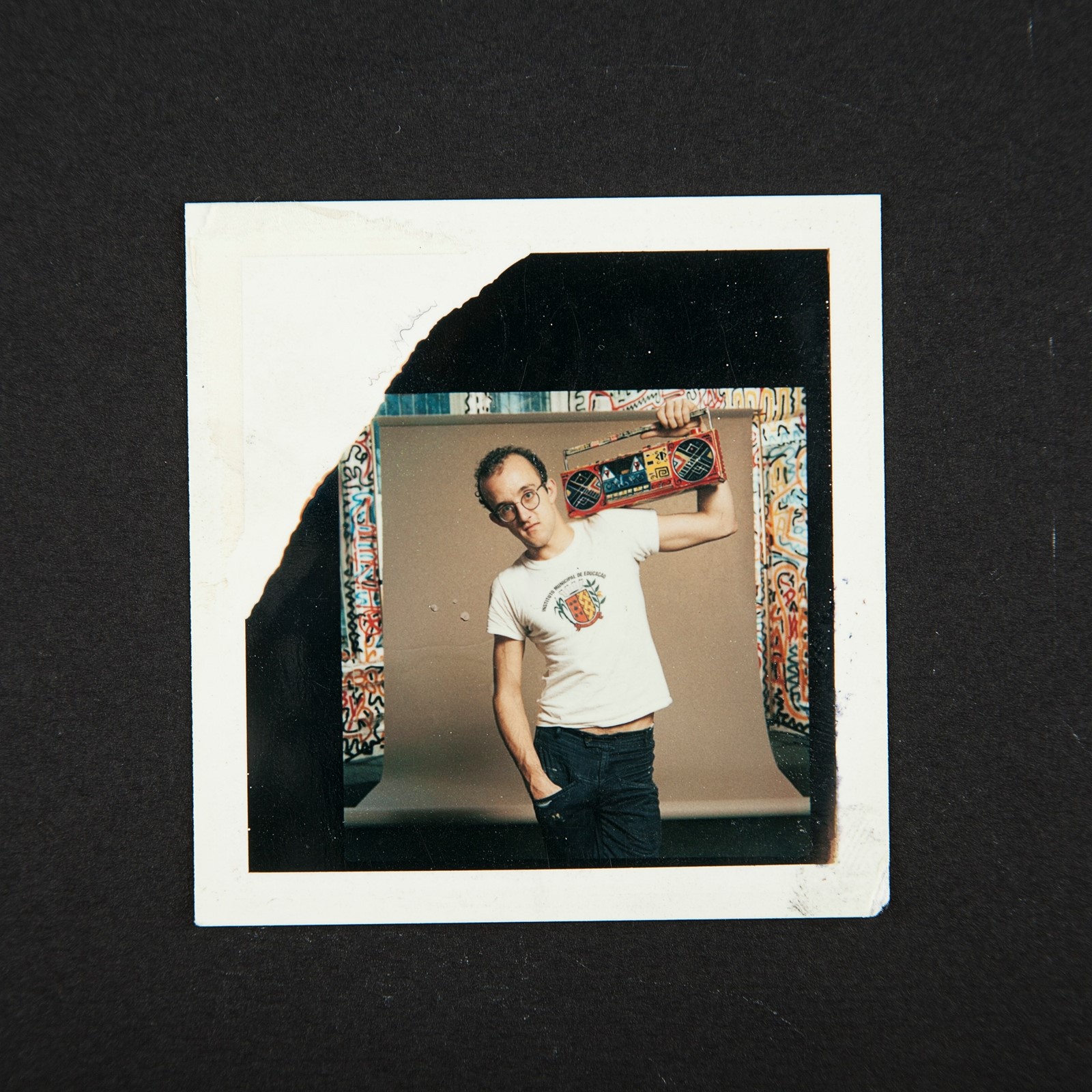
Dany Johnson
Dany Johnson is a record producer, stage manager, tech director, founding member of the all-girl percussion based No Wave band Pulsallama, and DJ’d at downtown New York nightclubs including Club 57, Mudd Club, Pyramid, Clit Club, and The World in the 1980s.
“I knew Keith from Club 57 in 1979 while he was at SVA. He was one of the gang. It was like we had this social club and we were all there most of the time. Club 57 was a real do-it-yourself place. People could come up with an idea and do it. It wasn’t a commercial club so we didn’t have to make money. Keith did a poetry night called Off Beat, and also made a video where people are all saying bits of words that he put them together, which later screened at the Museum of Modern Art.
“Keith loved music; he loved to dance, hip hop was just coming out and we really liked it. He gained the respect of graffiti writers by doing his own thing. He wasn’t trying to infringe on anything they did. He started bringing them and hip hop people to Club 57. I DJ’d his first solo show at Club 57 in 1981, it was a one night show of drawings: gold marker on black plastic. At the end he said, ‘Pick one out that’s not sold and I’ll give it to you’. Keith always gave things away to people and did so much for charity. Anyone who wanted help got help because he was aligned with those things.
“When Ronald Reagan was elected as President, everyone thought it was the worst disaster that could ever happen – little did we know! Ann Magnuson organised ‘It’s a Reagan World’, a photo shoot for the Soho Weekly News. The idea was all us freaks were going to pose as suburban couples. Tseng Kwong Chi took the pictures. Keith and I were wearing LL Bean, square people clothes, posted in front of a white backdrop with drawings of suburban houses on it. We were supposed to be Republicans.”
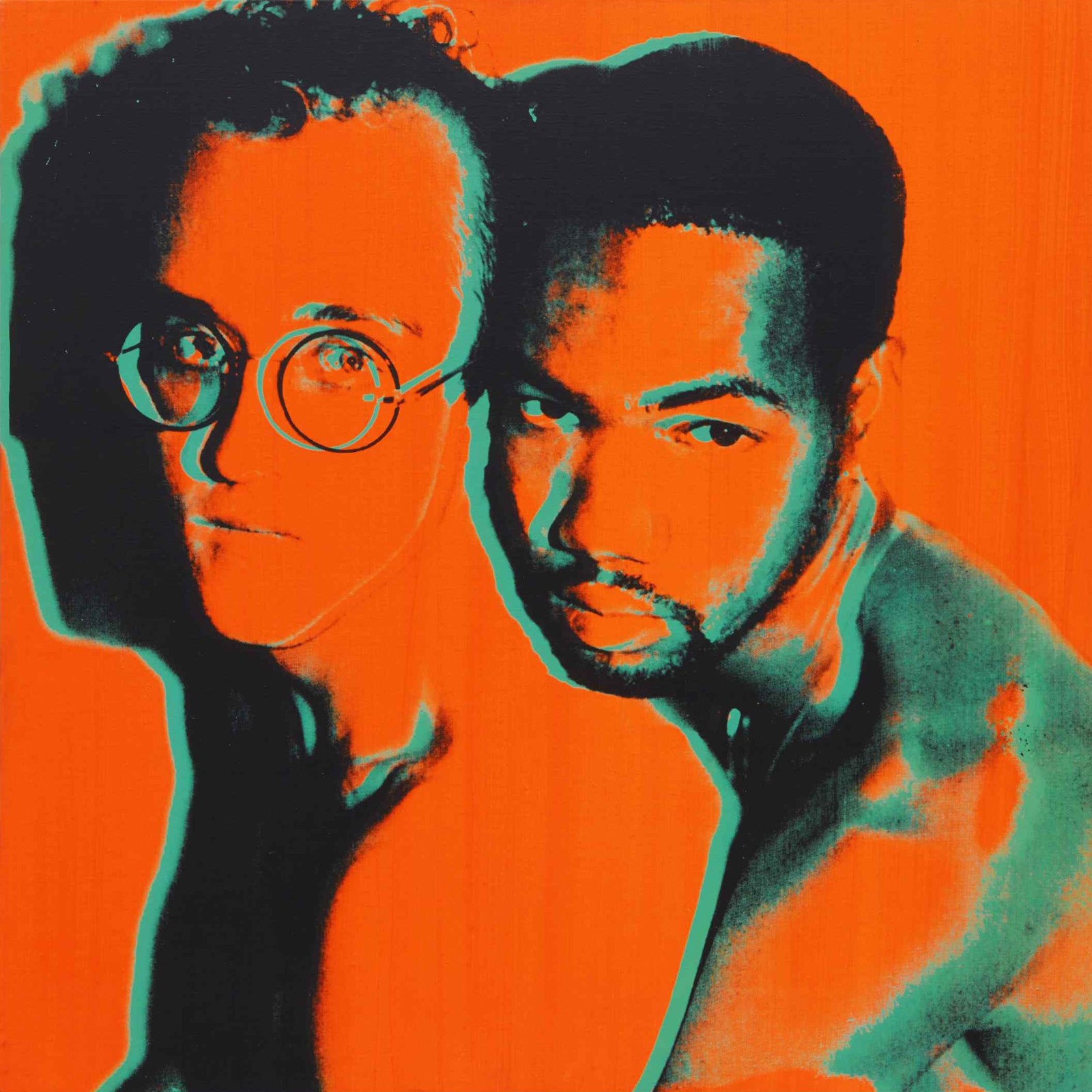
Christopher Makos
Photographer Christopher Makos apprenticed with Man Ray in Paris before arriving in New York during the mid-1970s and quickly became an integral part of Andy Warhol’s Factory. With the 1977 publication of White Trash, Makos made a name for himself as the first photographer to record the convergence of the uptown and downtown worlds.
“Keith and I met in the early 1980s. My first impression was that he was this creative white boy from Pennsylvania: innovative, a go-getter, curious about the arts. I introduced him to Andy Warhol. I took Keith up to the Factory at 860 Broadway and Andy thought he was cool. Andy wanted to be around the new creative set and I thought they would be a perfect set. But Keith didn’t hang out at the Factory. He didn’t need to be part of a group; Keith was his own one-man band.
“Keith was like so many of the young people during that time frame: people were searching for their identities, who they were, what they wanted to do with their lives. He knew he wanted to be an artist. He wasn’t sure how he was going to get there, but he ended up being a very clever marketer with the Radiant Baby; he made buttons of that and started giving them away. They were painted on walls and sidewalks. He understood how to market himself at the most grassroots level. He was right on the ball. He didn’t wait around for a dealer du jour like Bruno Bischofberger to come and discover him. He did it himself.
“Keith was an unstoppable force. He took the idea of graffiti and made it an art movement. He enriched the city with his art. He did a mural for the bathroom of The Lesbian, Gay, Bisexual & Transgender Community Center of New York – he put his art in public spaces. It was about being present. His art still speaks to people in the most immediate sort of way. Like all artists that die young, they leave a legacy but you don’t know where they would have gone.”
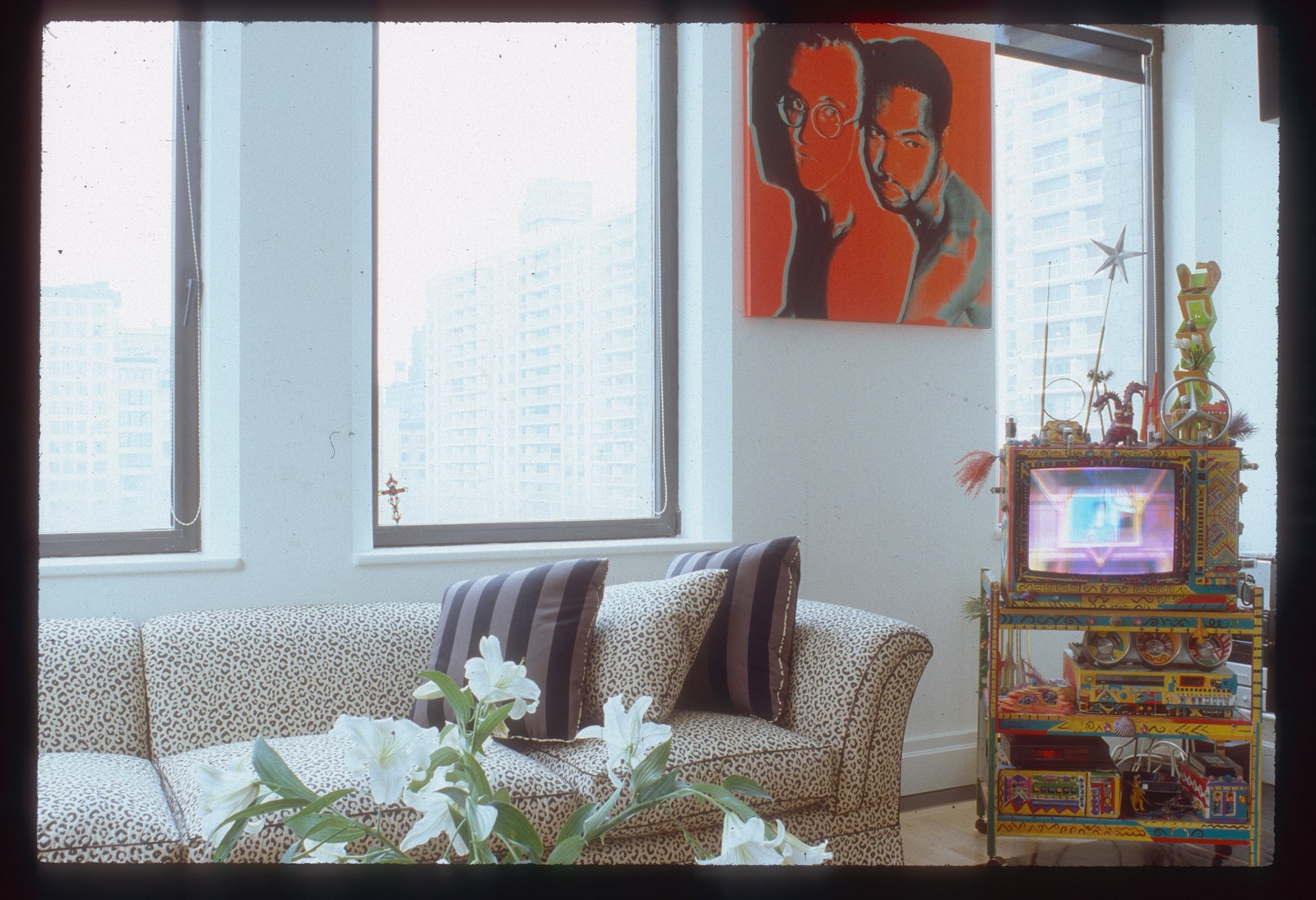
Karey Maurice Counts
Karey Maurice Counts is a Neo-Pop artist living and working in New Jersey who maintained a close friendship and working relationship with Haring during the last three years of the artist’s life.
“I grew up in New Jersey and started to venture into New York City as a teenager. Traveling the subway, I was seeing these images I became familiar with, not knowing who created them. I read somewhere that Keith Haring opened the Pop Shop and when I saw the all of those images, I felt I had to meet him.
“Bipo, the manager of the Pop Shop, told me Keith was going to be a part of the photo shoot for the new single, Crack Is Wack in front of the East Houston Street mural. We were drinking beer when this skinny white guy came up and said, ‘Oh it’s really hot out. You guys have beer? Can I have some?’ I said, ‘Sure’. Then someone said, ‘Hey Keith’. I cannot describe the moment in words. At that point I was like, ‘That’s him?’ I expected to see a Black guy. I was shocked. Bipo said, ‘Karey why don’t you show Keith your work?’ and he looked at the photos of my paintings that I had brought. After we finished the photo shoot, Keith invited me to his studio.
“I entered the magical studio. It was the shock of my life. That was the most important day of my life in terms of art and artists. He invited me in and told me to take a look around, and he instructed me like a little kid, ‘Don’t touch that’. He had a skateboard in the house so I was riding it up and down the studio, looking at things like the massive Mr. Chow mural he was working on. He allowed me to play around while he went to work. That day led to three years of me working for him. He was schooling me on how to do it. He didn’t have to invite me in or be a friend – but he believed in me from day one.”
Dear Keith: Works from the Personal Collection of Keith Haring is online at Sotheby’s from September 24 – October 1, 2020.
